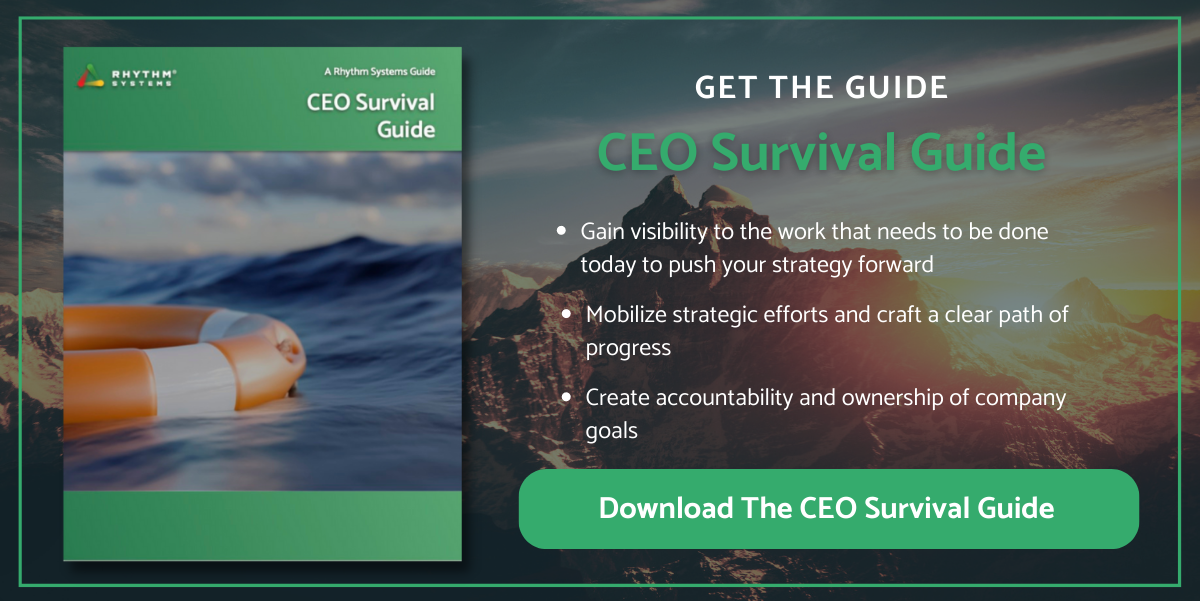When you work with so many CEOs, you get to see how they approach problems. They may not always tell you everything, but they will share insights that help you make smarter decisions. In this post, I will share five questions every CEO should answer before making any big strategic moves. These questions will help you understand why they made certain choices and what kind of impact they expect these changes to have on your company.
I've asked hundreds of CEOs a list of questions, and I hope you find them helpful. Great CEOs have the skill of asking the right questions to get to the root of the problem. I know that using strategic questions is a very useful tool for our executive coaches to help better understand the thinking behind the strategy and the long-term implications. In working with many leading mid-market CEOs and their executive leadership teams on their growth strategies, I often ask these leaders what keeps them up at night. If you know how to answer the following questions, you'll be well on your way to a good night's sleep.
What will it do to drive growth?
This a great question to start as it drives the purpose of the plan. You've determined your target sales revenue for this year which involves an aggressive increase in sales. How are you going to achieve them? Driving revenues in a meaningful way requires everyone in the organization to participate, not just the sales team. What initiatives can you take to ignite sales for prospective and current clients? How do you ensure that the various departments work together to produce synergies that lead to sustainable business success? You must develop a strategy, implement it, track it and adjust it weekly in order to achieve it.
You can increase revenue in a few ways. Will you launch a new product? Will you sell more to existing customers? Can you raise prices? Are there any acquisition targets that make sense? How can I improve the customer experience so much that I create fans that rave about my company and help me organically drive my growth?
How can it launch new products faster?
Not only do you not wish to delay launching your new project, but you also wish to do so without any unnecessary stress or hassle. You'll require to work closely with every team member involved in the process, including those responsible for delivering the final version of the software. By coordinating the various departments, you'll be able to reduce the amount of stress and hassle associated with launching your new project. Every day that you can cut down on time taken to deliver your new project means that you're increasing your profit margin. We've helped AvidXchange release a new project six months earlier than they originally planned. This gave them an advantage over their competitors, which they could leverage to take significant market share by coordinating better with several business units and solving problems proactively while they were still small.
How does it deal with acquisitions?
Of course, this means CEOs are up at night worrying about more than 70 percent of mergers and acquisitions failing. You must keep your employees and clients on track from two companies. They're likely using different systems, speaking other languages, and having very different SMART goals. Doing all the hard stuff while keeping the company's core values intact is critical with mergers and acquisitions. Too often, during the merger and acquisition process, employees get caught up in the financial modeling and not the human resources and cultural issues needed to make it succeed. We can help you see through the numbers and focus on what really matters and is of genuine interest to the culture when integrating companies.
How does it address company culture?
Engaging all of your employees is an important part of any company's success. Employees who feel engaged are more productive and loyal to your organization. They also perform better and stay longer. To ensure everyone feels valued and appreciated, you should establish clear goals and expectations for every employee. In addition, you must provide feedback regularly so that people know what they're doing right and where they could improve. Finally, you should reward good behavior and punish bad behavior. Research shows that company culture is one of the most important to help companies with the talent war. A hands-on approach from the chief executive to the newest employee regarding culture is essential to take care of your most valuable asset - your employees.
What are my top 3 priorities for the next 90 days?
It is one thing to have an annual strategic plan; it is another to complete. To create an execution-ready plan, you should identify the top projects that need to be done in the first quarter to ensure that you are on track to hit your goals and targets. Successful CEO strategies always include a detailed cross-functional action plan. Valuable insights always arise when you begin to lay out all the required steps, and you need to ensure that each department knows their part of the plan and what they are going to do about it.
If you are a CEO who has experienced sleepless nights due to any of these issues or simply struggling to execute your strategy, don't worry - we've been helping CEOs and executive teams of mid-market organizations for more than a decade. Contact us today to see if we are right for you. You can also check out our free resource library to get some ideas on how we might be able to assist you.
The plans can take any number of forms, depending on the organization's size. However, at the heart of the matter, the CEO's biggest challenge isn't about generating great ideas; it is about getting his or her team laser-focused on the most important ones and saying no to the rest. Many organizations struggle with the same issue - they simply aren't disciplined enough to focus on the top 3 to 5 priorities and say no to the others. It isn't about trying to do everything you want; it is about focusing on the handful of activities that will help you reach your goals. You've developed your annual strategy, so what will you do next to drive financial performance?
We believe that every business should have a strategy and a road map to follow. Our process ensures that your company has a clear vision and a detailed roadmap to achieve it. By creating a roadmap, we help you identify where you are today, where you want to go, and how to get there. Once you have recognized these goals, we develop a set of actions to move you toward them. These actions include identifying key stakeholders, developing a communications strategy, defining roles, problem-solving contacts, key responsibilities, and setting timelines.
Hopefully, knowing there is help around the corner will help you sleep well at night. Sweet dreams!
The Power of Systems and People: Accountable Leaders and Teams leadership development program to improve team performance.
Take Our Team Accountability Assessment to see how your team stacks up.
Why You Need a Peak Performance Plan for Your A-Players
Accountability Definition in Management
Team Accountability Begins with Personal Accountability
How top CEOs Close the Strategy Execution Gap
Building Team Accountability: Job Scorecards
10 Signs of an Accountable Culture [Infographic]
Growing Team Accountability in Your Organization
Quick Tips for Building Accountability
5 Steps to Having an Accountability Discussion [Video]




